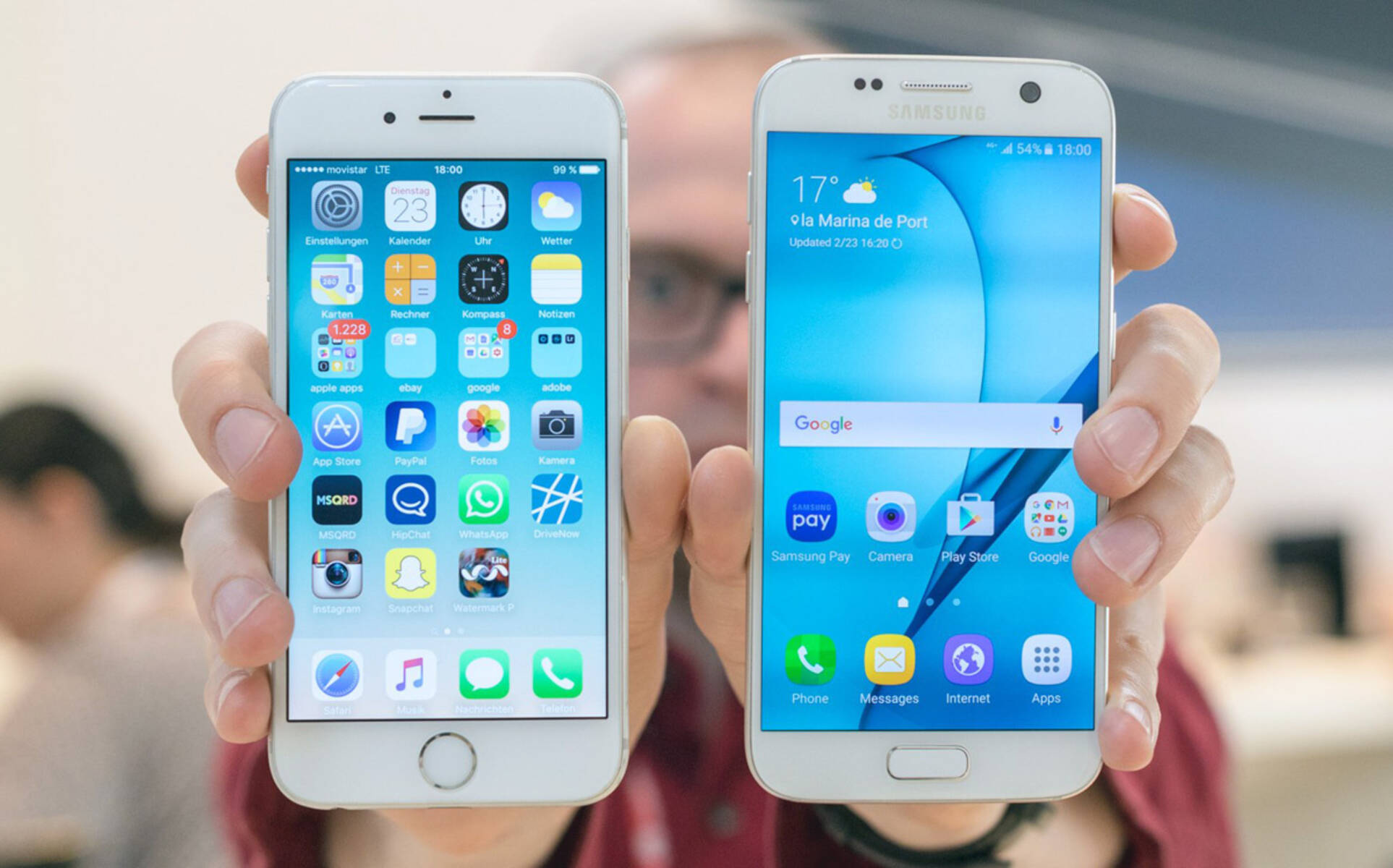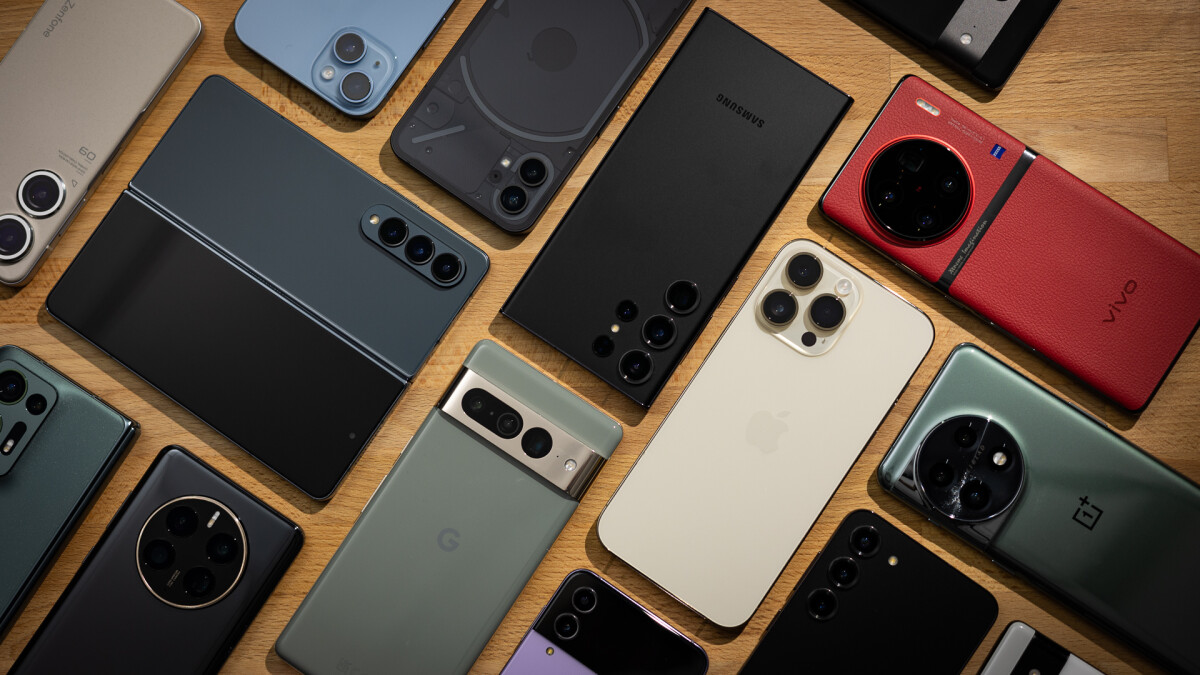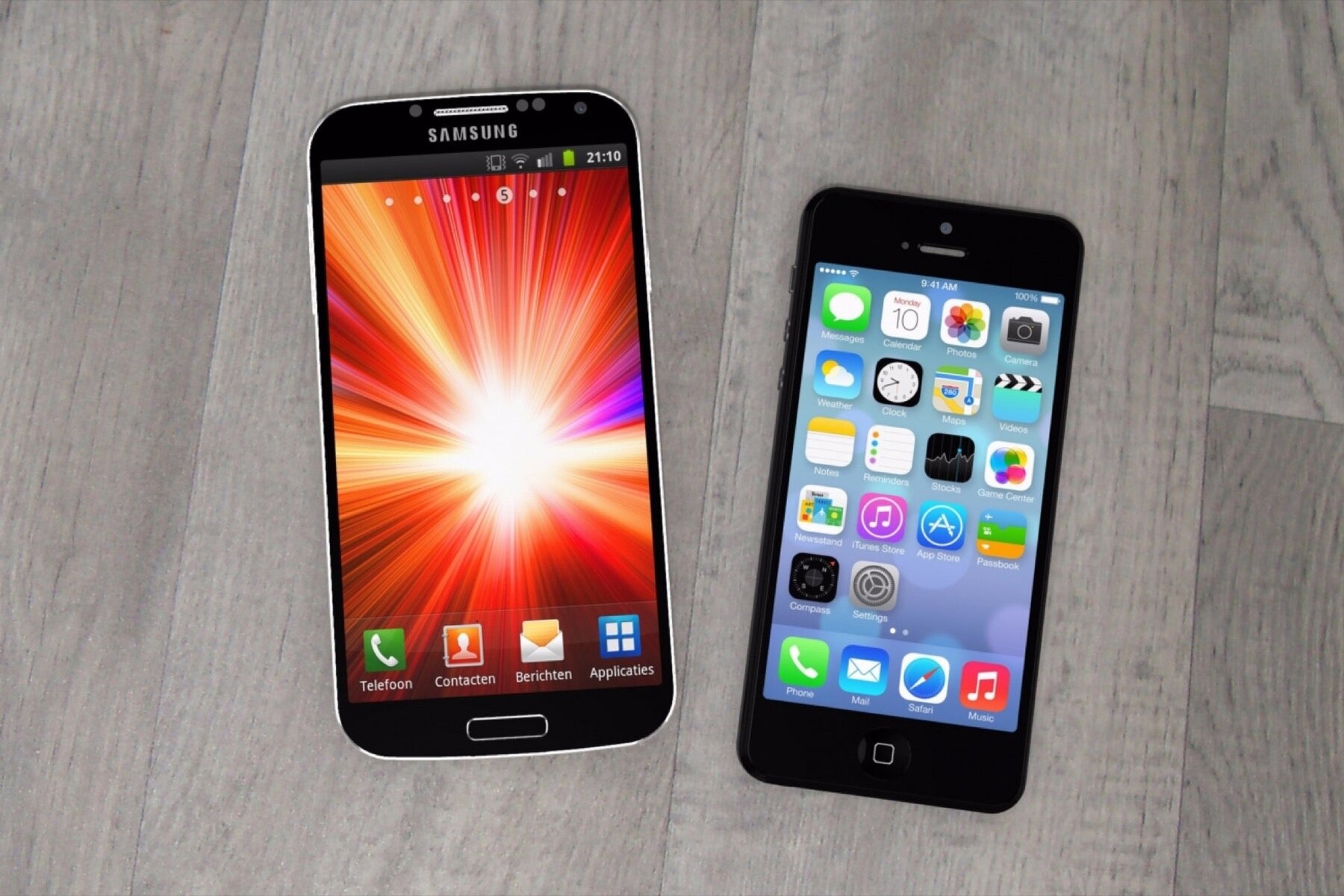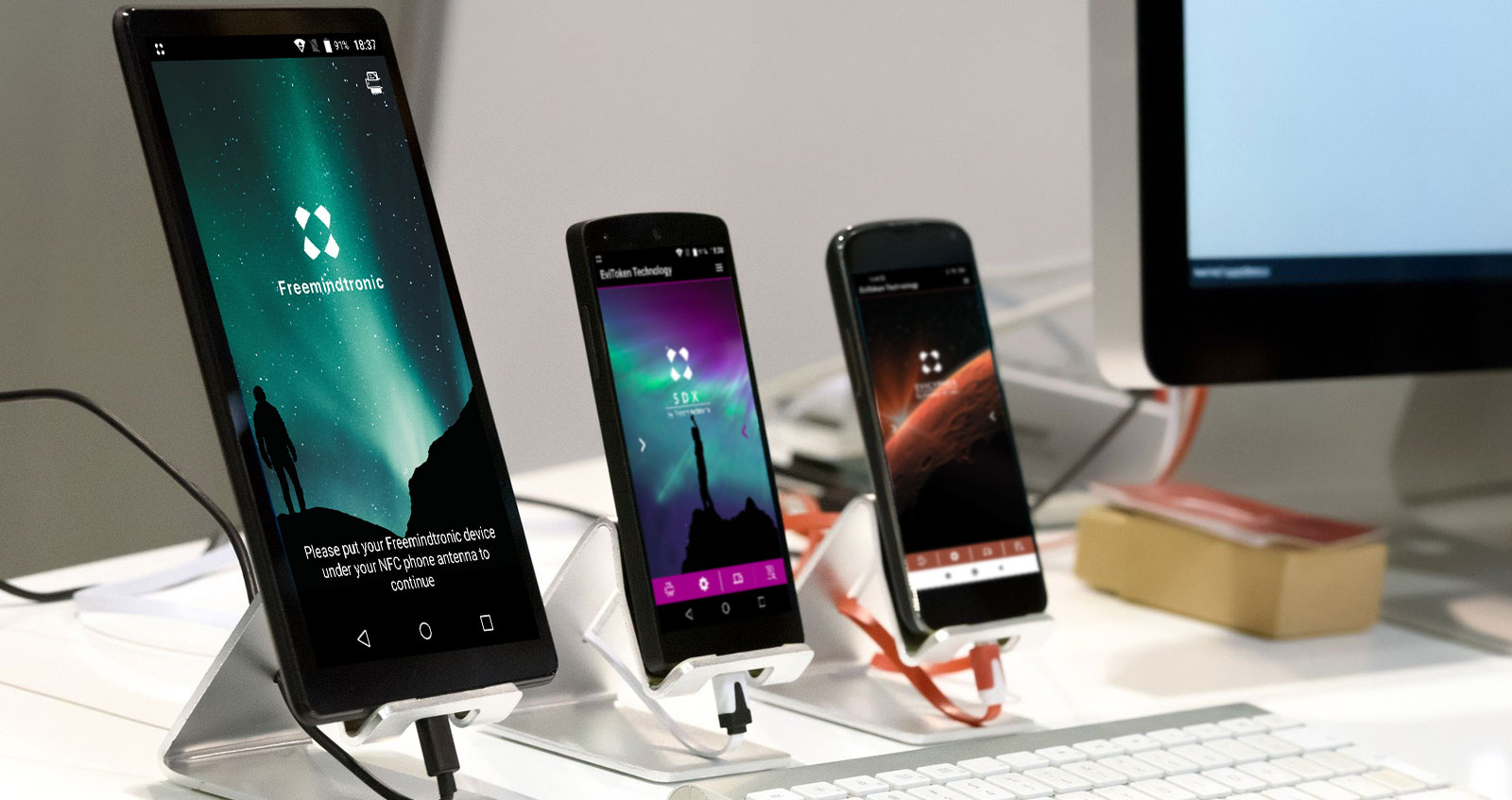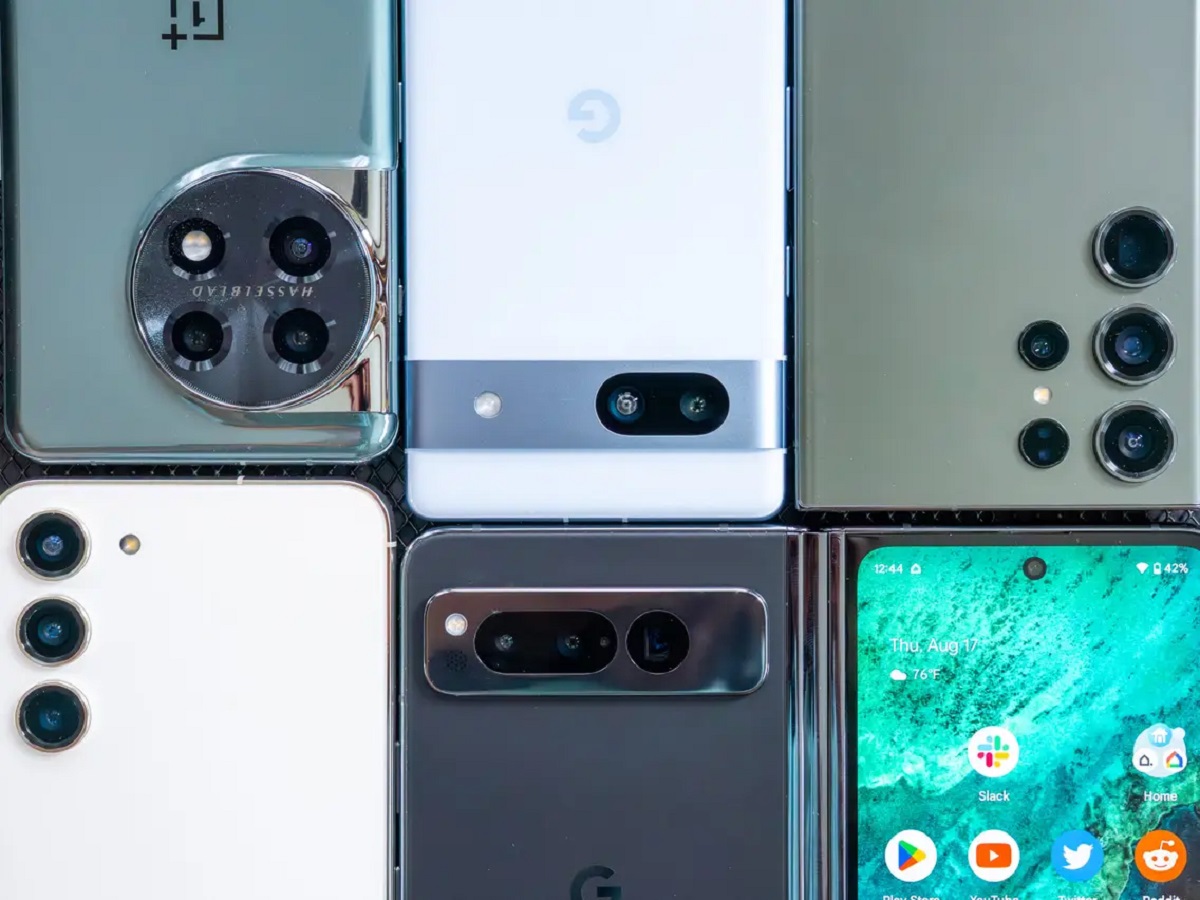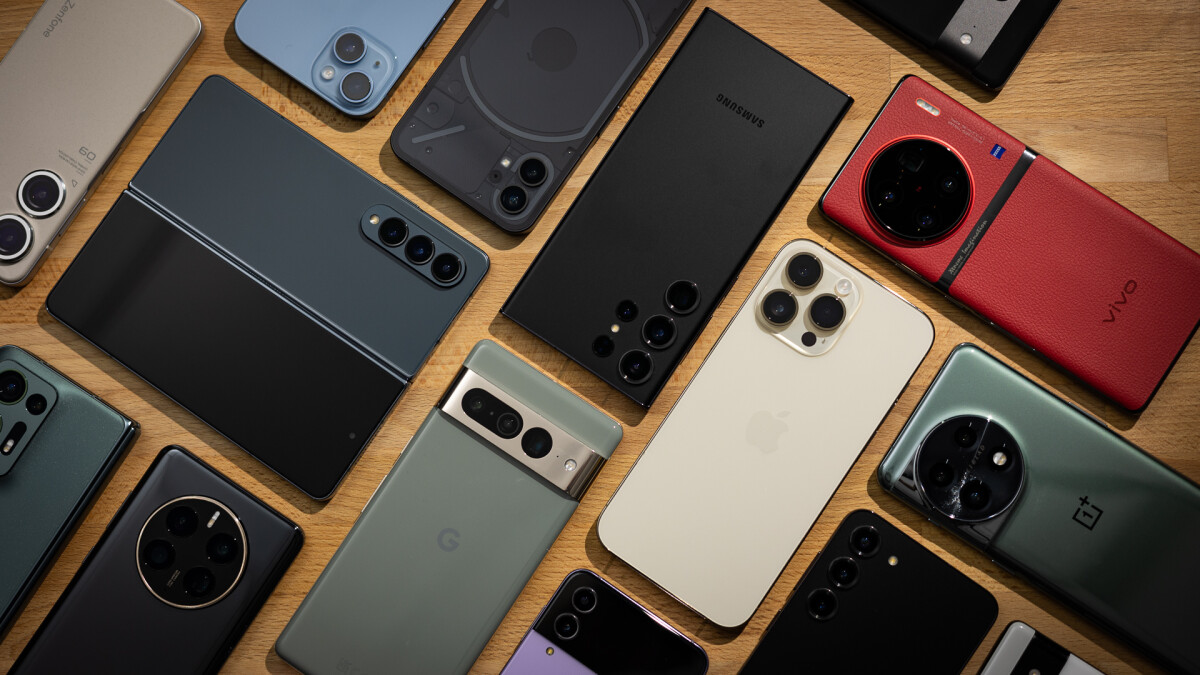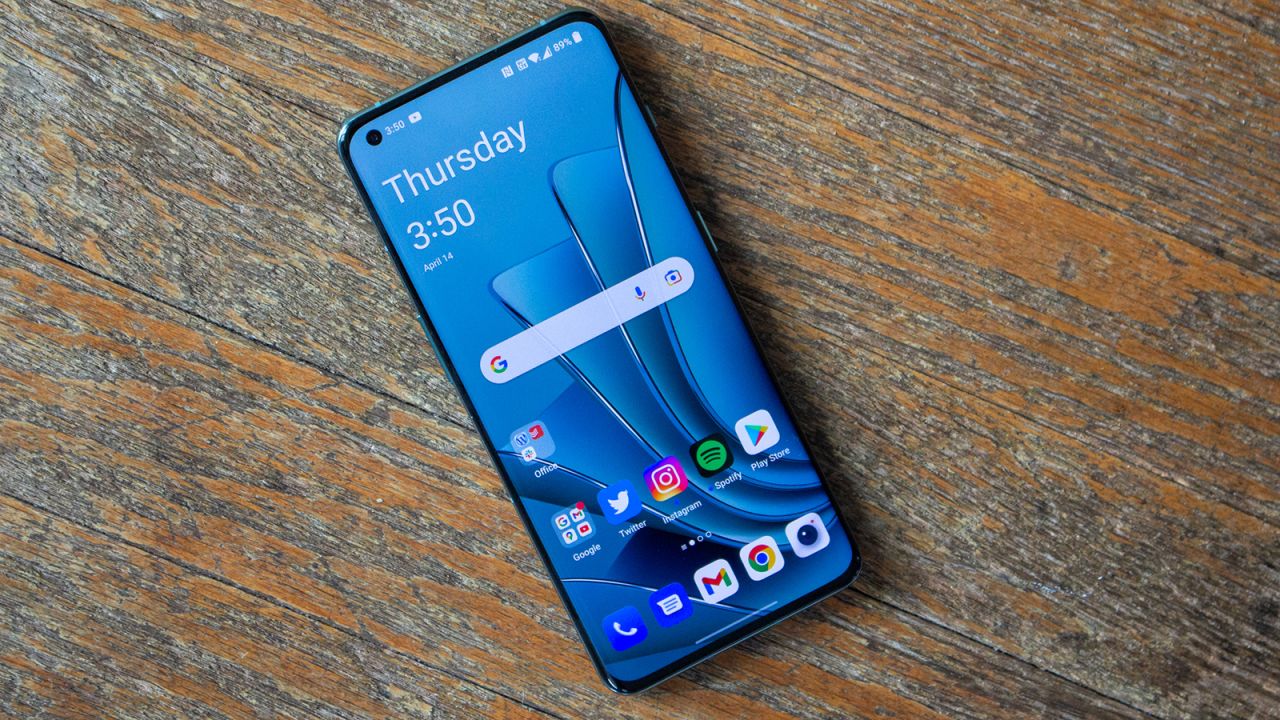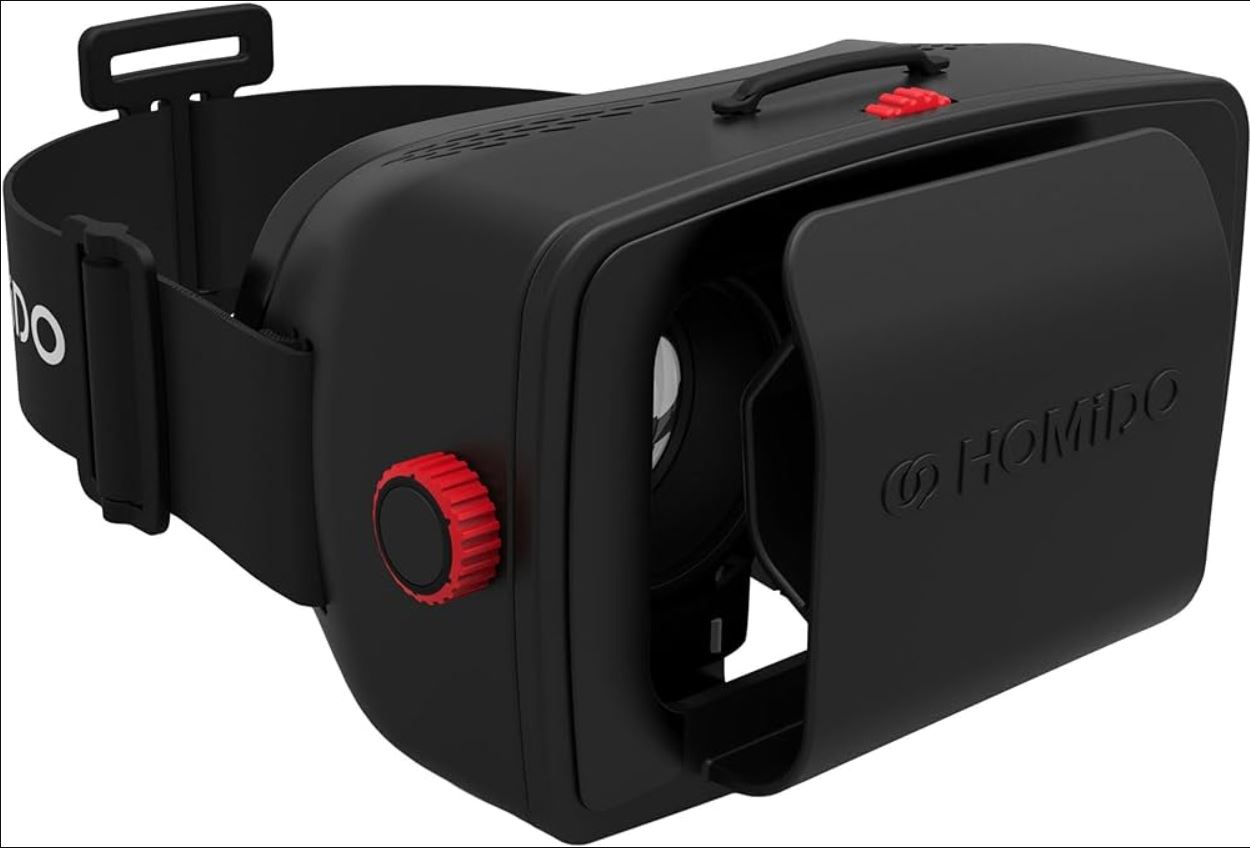Introduction
A smartphone and an Android phone are two terms often used interchangeably, but they actually refer to different aspects of mobile technology. Understanding the difference between these two concepts is important, as it can help consumers make informed decisions when purchasing a new mobile device.
A smartphone refers to a mobile phone that offers advanced capabilities beyond basic voice communication. These devices typically come equipped with features such as internet connectivity, email functionality, multimedia capabilities, and various applications. In essence, smartphones are handheld computers that allow users to access a wide range of services and perform tasks beyond traditional calling and texting.
On the other hand, an Android phone refers to a specific type of smartphone that operates on the Android operating system. Android is an open-source operating system developed by Google, which means that it can be used and modified by multiple device manufacturers. While there are other smartphone operating systems on the market, such as iOS for iPhones and Windows for Windows Phones, Android is one of the most popular and widely used options.
Now that we have a basic understanding of the terms, let’s delve deeper into the key differences between a smartphone and an Android phone.
Definition of a Smartphone
A smartphone is a mobile device that combines the functionality of a traditional phone with advanced features and capabilities. It is designed to provide users with a seamless and integrated experience, offering a wide range of functionalities beyond basic voice communication.
Smartphones are equipped with internet connectivity, allowing users to browse the web, access social media platforms, send and receive emails, and stay connected to the digital world. They also offer a variety of multimedia capabilities, such as the ability to capture high-quality photos and videos, play music and videos, and even stream content directly from the internet.
One of the defining features of a smartphone is the availability of various applications or apps. These apps provide users with access to a wide range of services and functionalities, such as gaming, productivity tools, fitness tracking, navigation, and much more. Users can download and install apps from app stores specific to their device’s operating system.
Smartphones also often come with advanced hardware features like high-resolution displays, powerful processors, ample storage space, and multiple cameras. This allows users to enjoy a smooth and immersive experience while using their device.
In summary, a smartphone is a versatile mobile device that combines the functionality of a phone with advanced features and capabilities. It offers internet connectivity, multimedia capabilities, access to various applications, and advanced hardware to provide users with a comprehensive and feature-rich experience.
Definition of an Android Phone
An Android phone refers to a type of smartphone that operates on the Android operating system, developed by Google. Android is an open-source operating system, which means that it can be used and customized by various device manufacturers to create their own unique smartphones.
Android phones offer a wide range of features and capabilities that make them popular among users. One of the key advantages of Android phones is the ability to customize the device to suit individual preferences. Users can customize the home screen, install different third-party launchers, and personalize various aspects of the user interface.
Android phones also provide access to the Google Play Store, which is the official app store for Android devices. This allows users to browse and download a vast array of applications, ranging from social media apps to productivity tools, games, and much more. The Google Play Store offers a diverse selection of apps, catering to the diverse needs and interests of users.
In addition to app customization, Android phones also offer a high level of hardware diversity. Different manufacturers create Android devices with varying specifications, including screen sizes, camera capabilities, processing power, and storage capacities. This provides users with a wide choice of devices to suit their specific needs and budget.
Furthermore, Android phones are known for their seamless integration with Google services. Google accounts can be easily synced with Android devices, allowing users to access their emails, calendars, contacts, and other Google services seamlessly. This level of integration enhances the overall user experience and simplifies the management of personal data.
In summary, an Android phone is a type of smartphone that utilizes the Android operating system. It offers a high level of customization, access to the Google Play Store for app downloads, hardware diversity, and seamless integration with Google services. These features make Android phones highly versatile and appealing to a wide range of users.
Key Differences
While smartphones and Android phones are closely related, there are some key differences between the two. Understanding these differences can help individuals make informed decisions when choosing their mobile devices.
- Operating System: The most fundamental difference between a smartphone and an Android phone lies in their operating systems. A smartphone is a broader category that encompasses all mobile devices with advanced capabilities. On the other hand, an Android phone specifically refers to a smartphone that operates on the Android operating system.
- App Store: Another significant difference is the app store. While both smartphones and Android phones offer access to various applications, the availability of apps may differ. Smartphones, including iPhones, have access to the Apple App Store, which offers a vast selection of apps specifically designed for iOS. Android phones, however, have access to the Google Play Store, offering a wide range of apps compatible with the Android operating system.
- Customization: Android phones are known for their high level of customization. Users have the ability to personalize their Android devices by customizing the home screen, installing third-party launchers, and even tweaking system settings. This level of customization is not as prevalent in other smartphones.
- Price Range: In terms of price range, Android phones tend to offer a wider range of options. With various manufacturers producing Android devices, there are budget-friendly options available as well as high-end flagship models. In contrast, other smartphones, such as iPhones, are typically priced at the higher end of the spectrum.
These key differences between smartphones and Android phones highlight the varying features and capabilities each offers. Ultimately, the choice between the two depends on individual preferences, required functionalities, and budget considerations.
Operating System
One of the significant differences between a smartphone and an Android phone lies in the operating system they run on. A smartphone is a general term that refers to any mobile device with advanced capabilities, while an Android phone specifically refers to a smartphone that operates on the Android operating system.
Android is an open-source operating system developed by Google. It offers a versatile and customizable platform for smartphone manufacturers to build upon. Being open-source means that the source code of the operating system is openly available, allowing device manufacturers to modify and customize it according to their needs.
The Android operating system is known for its user-friendly interface, seamless integration with Google services, and extensive compatibility with a wide range of applications. It provides users with a familiar and intuitive experience, with access to a plethora of features and functionalities.
On the other hand, other smartphones, such as iPhones, run on different operating systems like iOS. iOS is a proprietary operating system developed by Apple exclusively for their devices. It offers a different user interface and user experience compared to Android, with a focus on simplicity and a seamless integration with other Apple products and services.
One of the advantages of Android is its extensive app ecosystem. The Google Play Store, which is the official app store for Android devices, hosts millions of applications that cater to a wide range of interests and needs. Users can download and install apps from the Play Store to enhance the functionality of their Android phones.
In contrast, iPhones utilize the Apple App Store, which offers a curated selection of applications specifically designed and optimized for iOS. While the Apple App Store may have a slightly smaller app count compared to the Google Play Store, it is known for its stringent app review process, ensuring high-quality and secure applications for users.
In summary, the operating system is a key distinction between smartphones and Android phones. Android phones run on the Android operating system, an open-source platform with extensive customization options and a vast app ecosystem. Other smartphones, like iPhones, run on proprietary operating systems such as iOS, which offer a unique user experience and an exclusive app store.
App Store
When it comes to apps and software, the app store is an important aspect to consider when comparing smartphones and Android phones. While both devices offer access to various applications, the specific app stores they use can differ.
Android phones utilize the Google Play Store, which is the official app store for Android devices. It hosts a vast collection of apps, ranging from popular social media platforms like Facebook and Instagram to productivity tools, games, entertainment apps, and much more. The Google Play Store offers a wide range of free and paid apps, allowing users to customize their Android experience with the apps that best suit their needs.
The Google Play Store also offers various categories and recommendations to help users discover new apps. It has a robust review system, where users can provide ratings and reviews for apps, giving others insights into the quality and usability of the apps. This allows users to make informed decisions before downloading and installing apps.
In contrast, other smartphones, such as iPhones, use the Apple App Store. The Apple App Store is the exclusive app store for iOS devices and is known for its curated selection of applications. Apple has strict guidelines and a thorough review process for apps submitted to the App Store, ensuring quality and security for users.
While the Apple App Store may have a smaller number of apps compared to the Google Play Store, it is known for its focus on user experience and the availability of high-quality applications. The Apple App Store also offers various categories, curated collections, and recommendations to assist users in finding the apps they need.
In addition to the availability of apps, another difference between the app stores is the payment system. Android’s Google Play Store offers more flexibility in terms of payment methods, allowing users to choose from various options, including credit cards, carrier billing, and even direct carrier payments. The Apple App Store, on the other hand, primarily relies on credit card payments and Apple’s own payment system.
In summary, the app store is an important factor to consider when comparing smartphones and Android phones. Android phones use the Google Play Store, which provides a vast collection of apps, while other smartphones use the Apple App Store, known for its curated selection. The availability, quality, and payment options for apps may vary between the two app stores.
Customization
When it comes to customization, Android phones have a significant advantage over other smartphones. Android’s open-source nature allows users to personalize and customize their devices to a great extent, making it a popular choice for those who prefer a tailored user experience.
Android phones offer a wide range of customization options, starting with the home screen. Users can customize the layout, widgets, and app icons on their home screens, allowing for a personalized and unique look. Additionally, users can choose from different launcher apps available on the Google Play Store to further customize the overall look and feel of their device.
Furthermore, Android phones offer more flexibility in terms of default apps. Users can choose their preferred apps for various functions such as web browsing, email, messaging, and more. This freedom allows users to use the apps that best match their preferences and needs, enhancing the overall user experience.
In addition, Android phones also support various third-party customization options. Users can install custom themes, icon packs, and even modify system elements such as fonts and animations. This level of customization allows users to create a truly unique and personalized interface on their Android devices.
On the other hand, other smartphones like iPhones offer limited customization options. Apple has a more controlled approach to customization, with a focus on consistency and uniformity across devices. While users can rearrange their app icons and choose their wallpaper, the level of customization is relatively limited compared to Android.
Overall, the customization options on Android phones provide users with more freedom and flexibility to personalize their devices according to their preferences and style. The ability to customize the home screen, choose default apps, and install third-party customization options sets Android phones apart in terms of customization.
Price Range
When it comes to price range, Android phones offer a wider variety of options compared to other smartphones. This makes Android phones a popular choice for individuals looking for affordability and flexibility in their mobile devices.
Android phones are available in a wide range of price points, starting from budget-friendly options to high-end flagship models. This variety allows users to choose a device that fits their budget and specific needs. There are numerous Android phone manufacturers, each offering devices at different price ranges to cater to a diverse market.
At the lower end of the price spectrum, Android phones offer basic features and functionality suitable for individuals who primarily use their devices for calls, texts, and basic social media usage. These budget-friendly Android phones can be an ideal choice for those on a tight budget or looking for a secondary device.
On the other hand, Android also offers flagship models that rival the features and performance of other smartphones. These high-end Android phones come equipped with the latest technology, including advanced processors, high-resolution displays, and cutting-edge camera systems. While they may come at a higher price point, they provide top-of-the-line features and specifications.
In contrast, other smartphones like iPhones have a more limited price range. Apple focuses on offering premium devices at premium prices, which means that iPhones tend to be on the higher end of the price spectrum. While iPhones are known for their build quality and seamless integration with Apple’s ecosystem, they may be less accessible for those on a tight budget.
Ultimately, the price range of Android phones makes them a versatile option for users across different budget ranges. Whether one is looking for an affordable entry-level device or a high-end flagship model, there are numerous Android phones available to suit various needs and price points.
Popular Examples of Smartphones
There are several popular smartphones on the market today, each offering unique features and capabilities. Let’s take a look at some of the most well-known and widely used smartphones:
- iPhone: The iPhone, developed by Apple, is one of the most recognizable smartphones in the world. Known for its sleek design, seamless integration with Apple’s ecosystem, and powerful performance, iPhones are favored by many users. They run on the proprietary iOS operating system and offer a wide range of features, including a high-quality camera, advanced security features, and access to the Apple App Store.
- Samsung Galaxy: Samsung Galaxy smartphones have gained immense popularity, thanks to their stunning displays, powerful processors, and advanced camera systems. These Android-based devices offer a wide range of features and customizable options, making them a popular choice for users who prioritize performance and versatility. Samsung regularly releases new models within its Galaxy line, catering to different price ranges and user preferences.
- Google Pixel: The Google Pixel smartphones, known for their pure Android experience, are highly regarded for their excellent camera performance and seamless integration with Google services. These devices run on the latest version of Android and receive timely software updates directly from Google. With a clean user interface and access to the Google Play Store, Google Pixel phones offer a premium experience for Android enthusiasts.
- OnePlus: OnePlus devices have gained a dedicated fan base due to their competitive pricing and impressive performance. These Android smartphones offer flagship-level specifications and features at a more affordable price compared to other high-end devices. OnePlus phones are known for their fast charging capabilities, smooth software experience, and customizable user interface.
These are just a few examples of popular smartphones in the market. Other notable mentions include smartphones from brands like Huawei, Xiaomi, LG, and Motorola, each offering their own unique features and value propositions. The choice of a smartphone ultimately depends on individual preferences, budget, and specific requirements.
Popular Examples of Android Phones
Android phones come in a wide range of models and brands, offering users a variety of options to choose from. Let’s explore some of the most popular Android phones known for their features, performance, and user satisfaction:
- Samsung Galaxy S21: The Samsung Galaxy S21 is a flagship Android phone known for its powerful performance, stunning design, and advanced camera capabilities. It features a high-resolution display, a fast processor, and supports 5G connectivity. The Galaxy S21 offers a range of models, including the S21, S21+, and S21 Ultra, catering to different budgets and preferences.
- Google Pixel 5: The Google Pixel 5 is known for its exceptional camera quality and clean software experience. It features a sleek design, a smooth display, and offers a pure Android experience with the latest updates directly from Google. The Pixel 5 also integrates well with Google services and offers helpful features like call screening and real-time language translation.
- OnePlus 9 Pro: The OnePlus 9 Pro combines top-notch performance with a sleek design and a vibrant display. It features a powerful processor, fast charging capabilities, and an impressive camera system co-developed with Hasselblad, a renowned camera brand. OnePlus devices are known for their smooth software experience and customizable user interface.
- Xiaomi Mi 11: The Xiaomi Mi 11 offers a flagship experience at a competitive price point. It boasts a high-resolution display, a powerful processor, and a versatile camera system. The Mi 11 also includes features like wireless charging, a large battery capacity, and a refined design, making it a sought-after Android phone for tech enthusiasts.
- Samsung Galaxy A52: The Samsung Galaxy A52 is a mid-range Android phone that offers an excellent balance of performance and affordability. It features a vibrant display, a capable camera setup, and long battery life. The Galaxy A52 also supports water and dust resistance, expandable storage, and offers a range of color options to suit different styles.
These are just a few examples of popular Android phones currently available in the market. Other notable mentions include phones from brands like Xiaomi, OPPO, Realme, and Motorola, each offering their own set of features and price ranges. The wide range of options ensures that users can find an Android phone that suits their specific needs and preferences.
Conclusion
Understanding the difference between a smartphone and an Android phone is essential when considering a mobile device purchase. While the term “smartphone” refers to any advanced mobile device, an Android phone specifically runs on the Android operating system developed by Google.
In this article, we have explored the definitions of smartphones and Android phones, highlighting their distinctive features and capabilities. We have discussed key differences, such as the operating systems, app stores, customization options, and price ranges.
Smartphones, including Android phones, have revolutionized the way we communicate, work, and entertain ourselves. These devices offer features like internet connectivity, multimedia capabilities, access to a multitude of applications, and high-quality cameras. The choice between a smartphone and an Android phone depends on personal preferences, requirements, and budget.
While Android phones dominate the market due to their versatility, customization options, and wider price range, other smartphones like iPhones cater to users who prioritize seamless integration with other Apple products and services. Ultimately, it is important to consider factors like usability, ecosystem compatibility, desired features, and budget when choosing a mobile device.
Whether you opt for an Android phone or another type of smartphone, remember to consider your specific needs, review device specifications, and read user reviews to make an informed decision. The world of smartphones continues to evolve, offering innovative technologies, advanced features, and new possibilities for users.
Regardless of the device you choose, a smartphone or an Android phone will undoubtedly play a crucial role in connecting you to the digital world, enhancing productivity, and keeping you informed and entertained.







